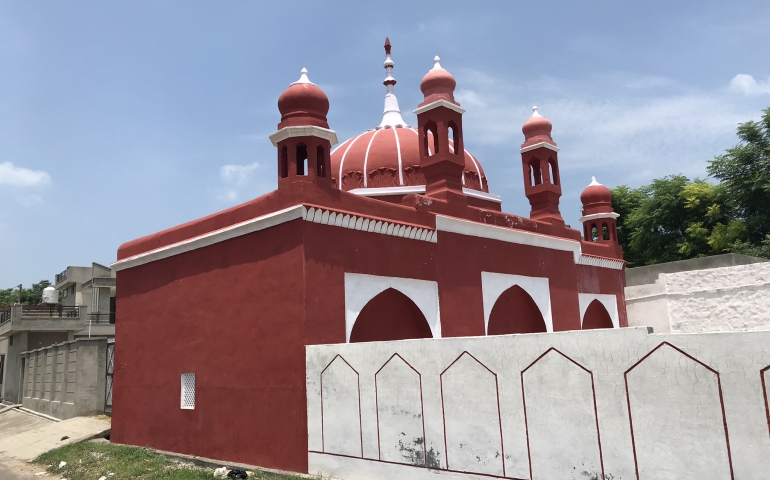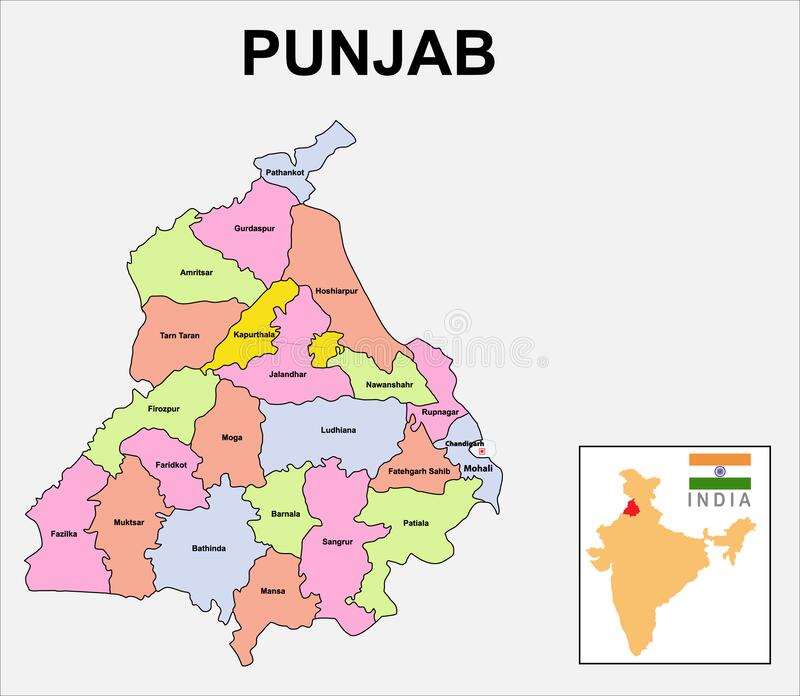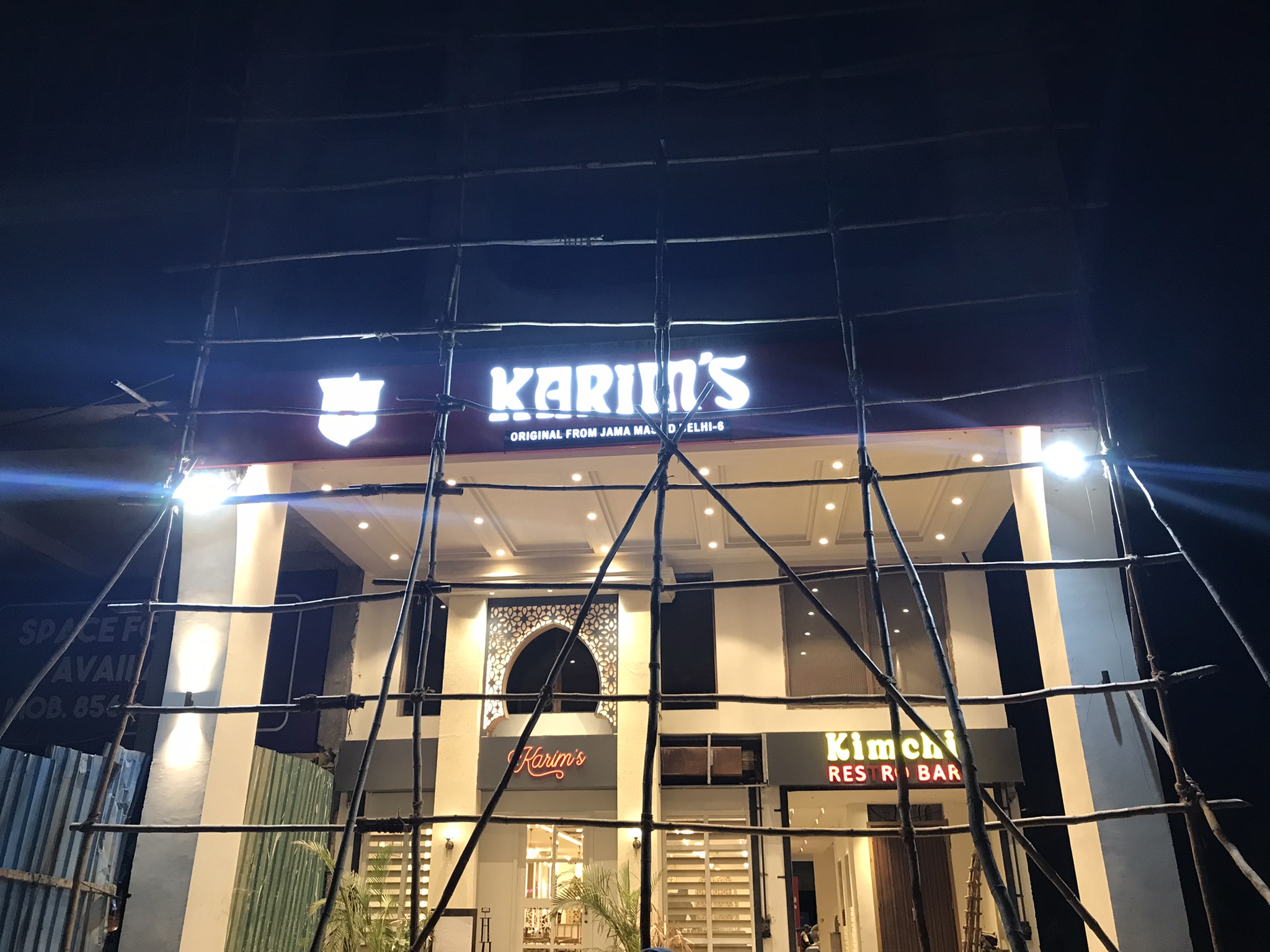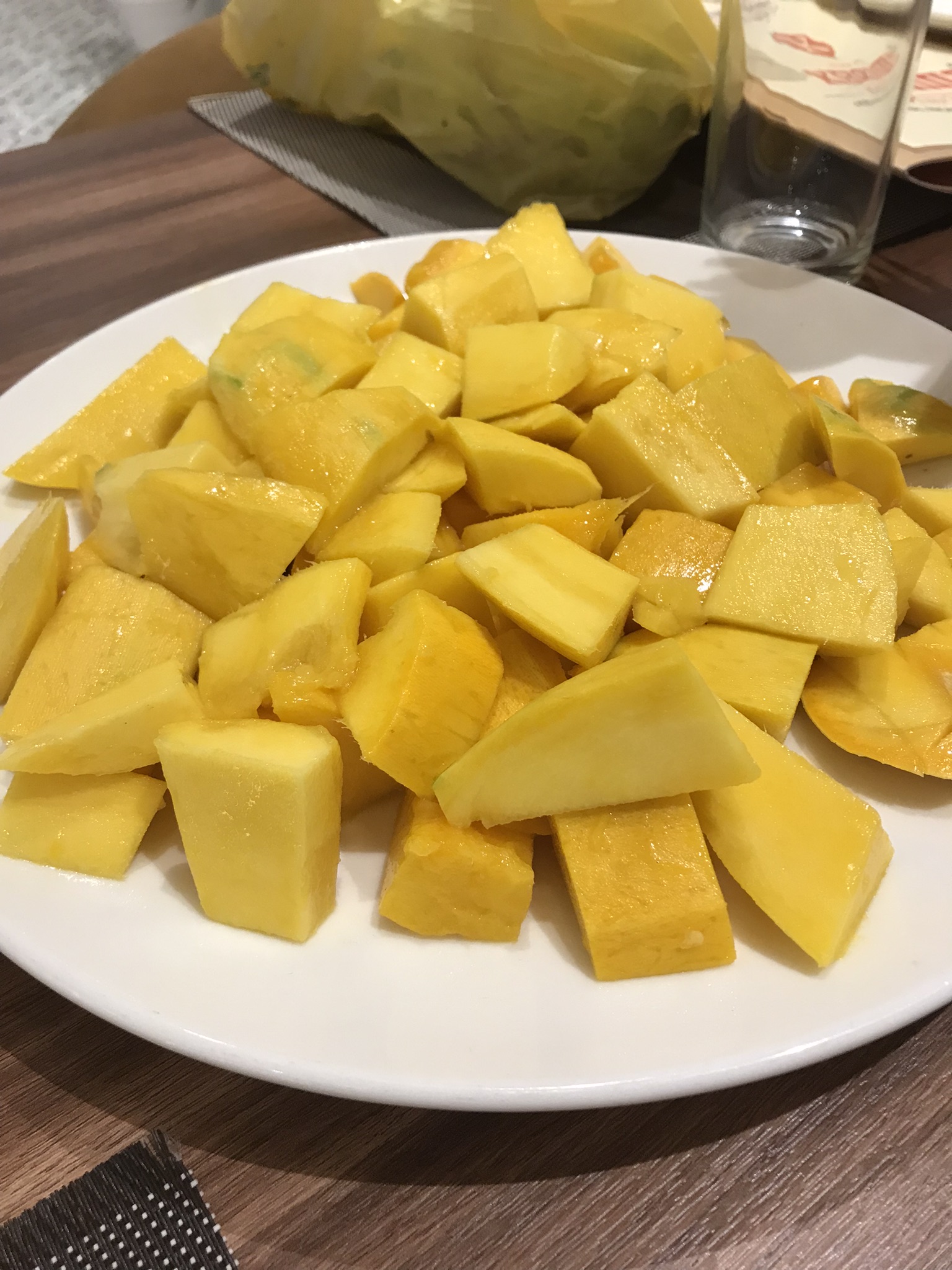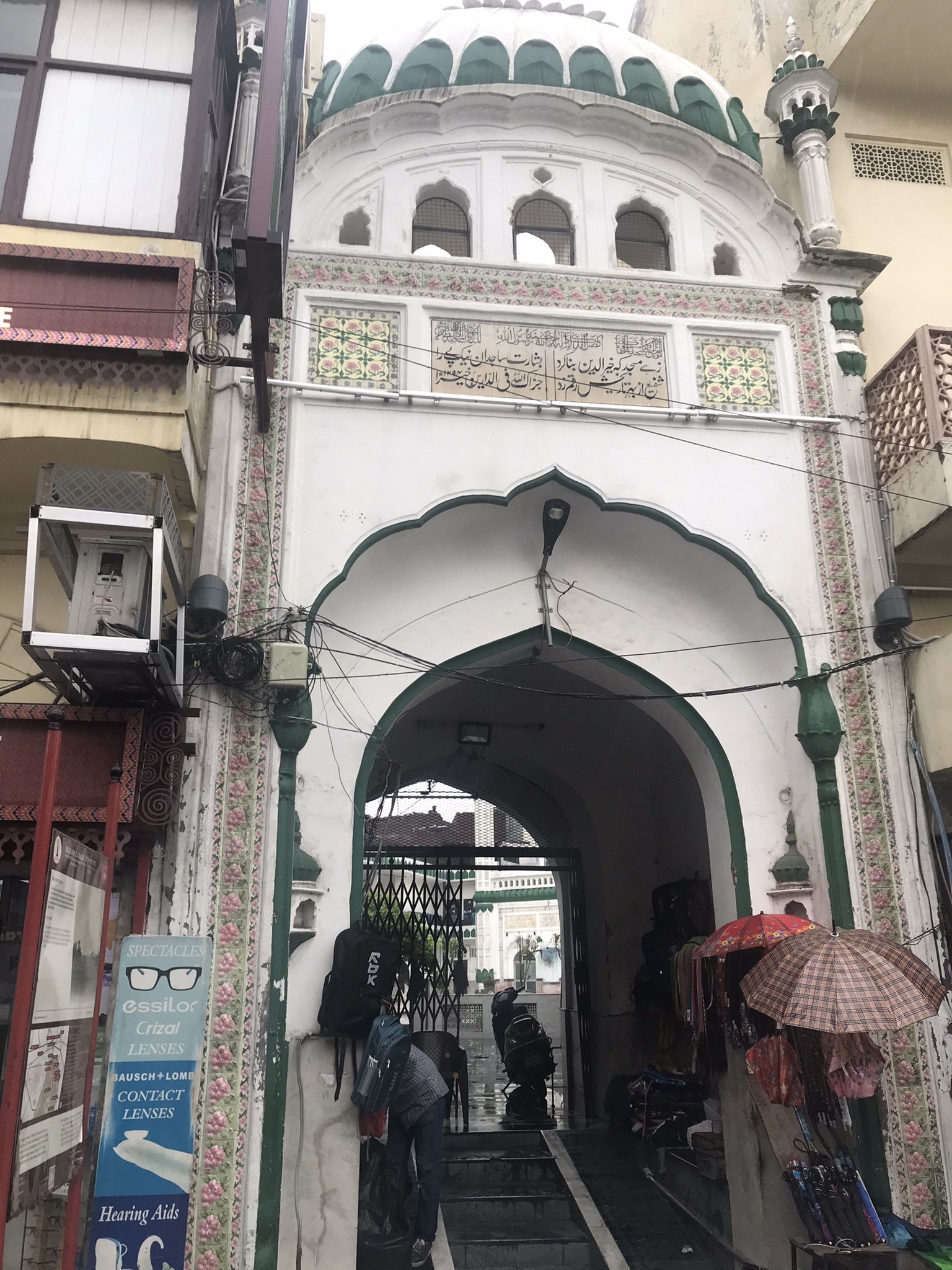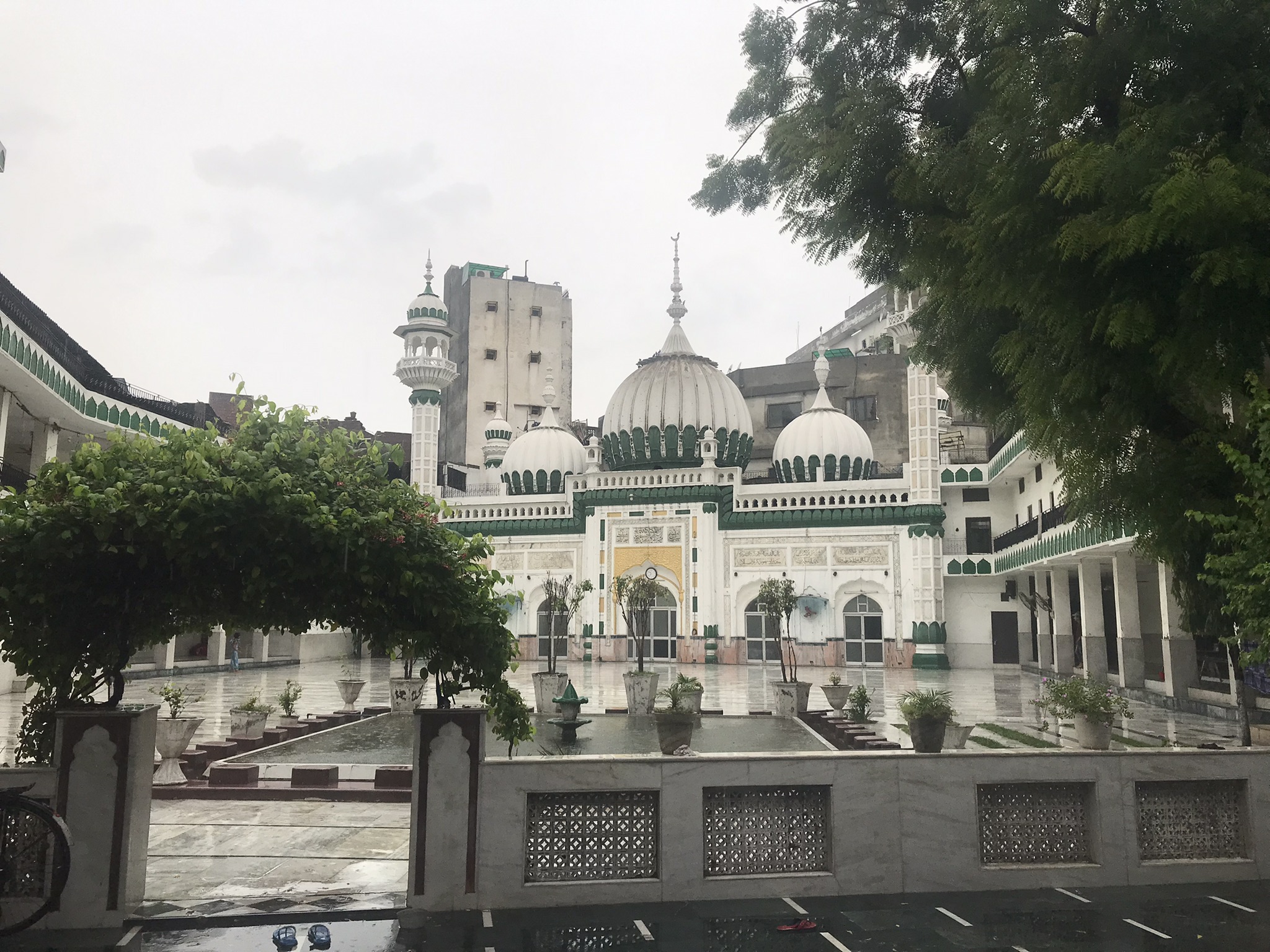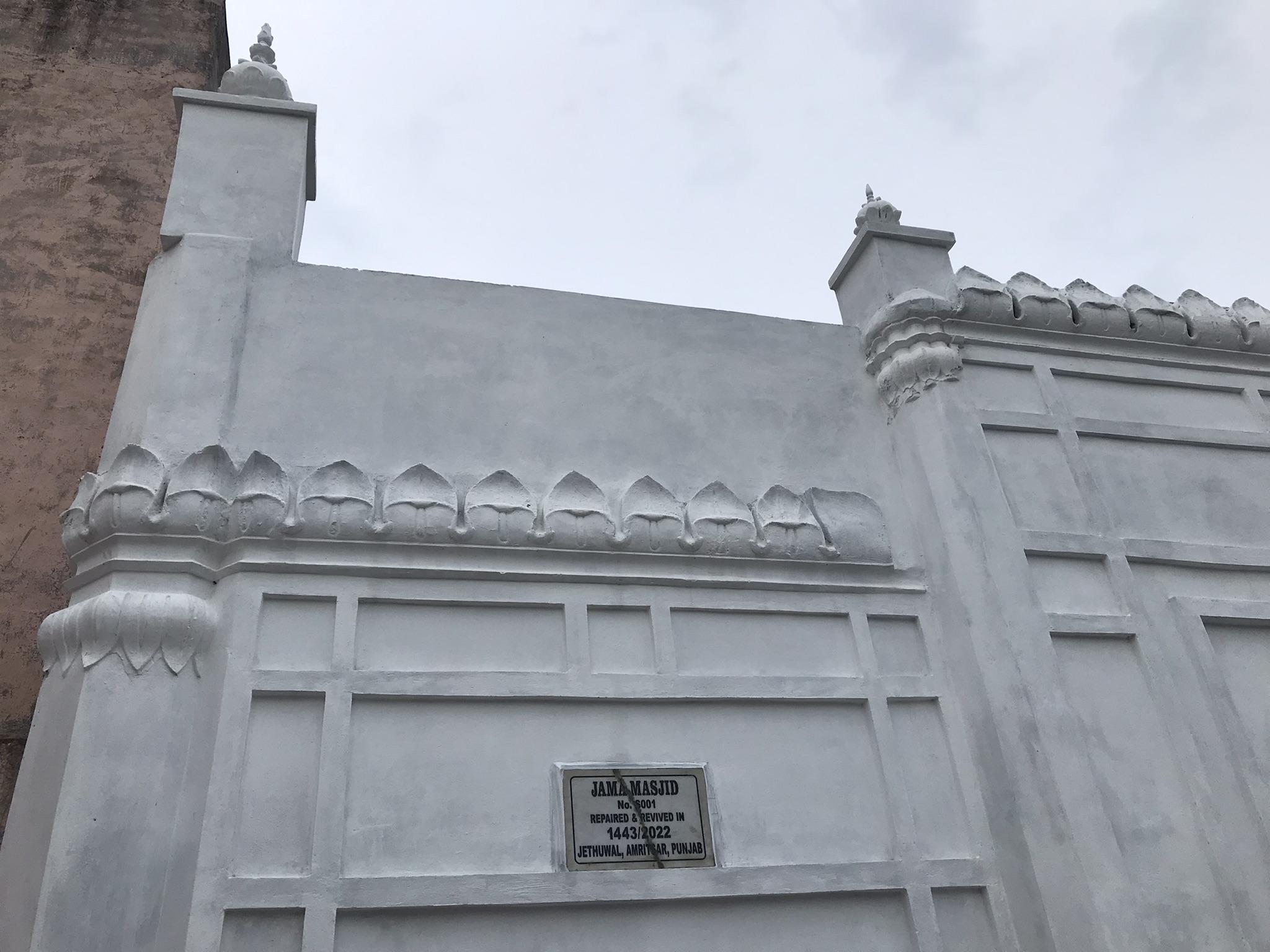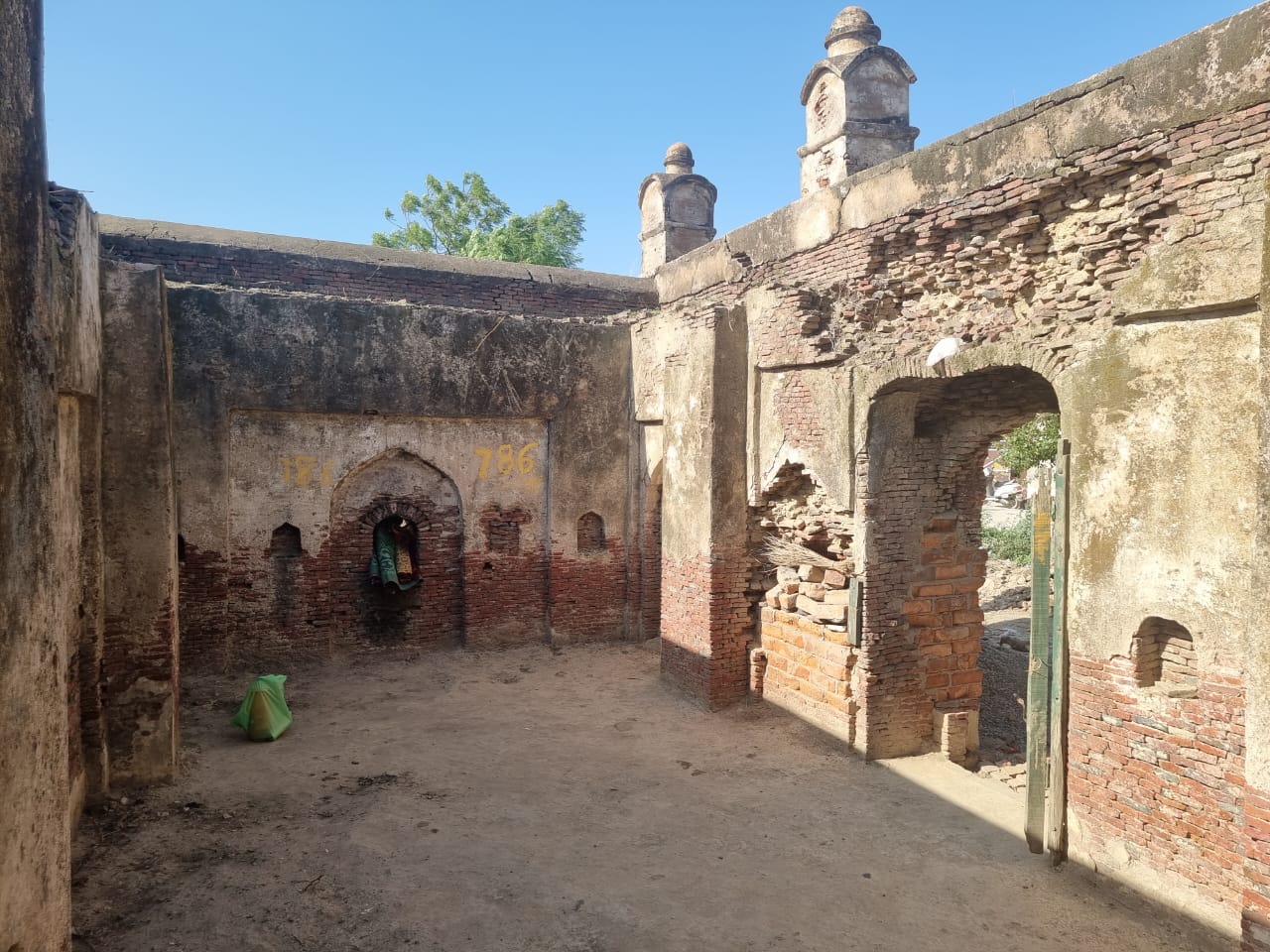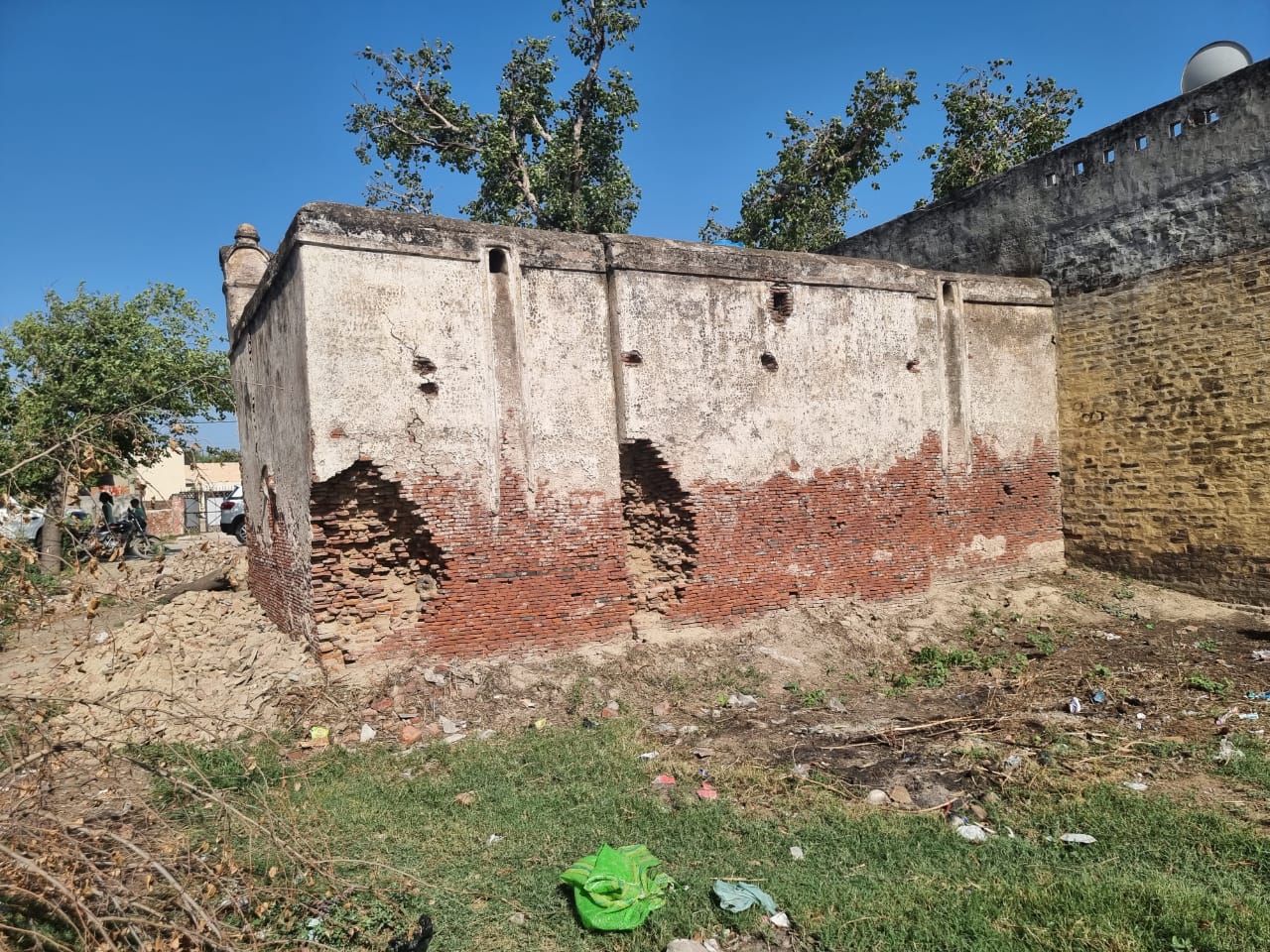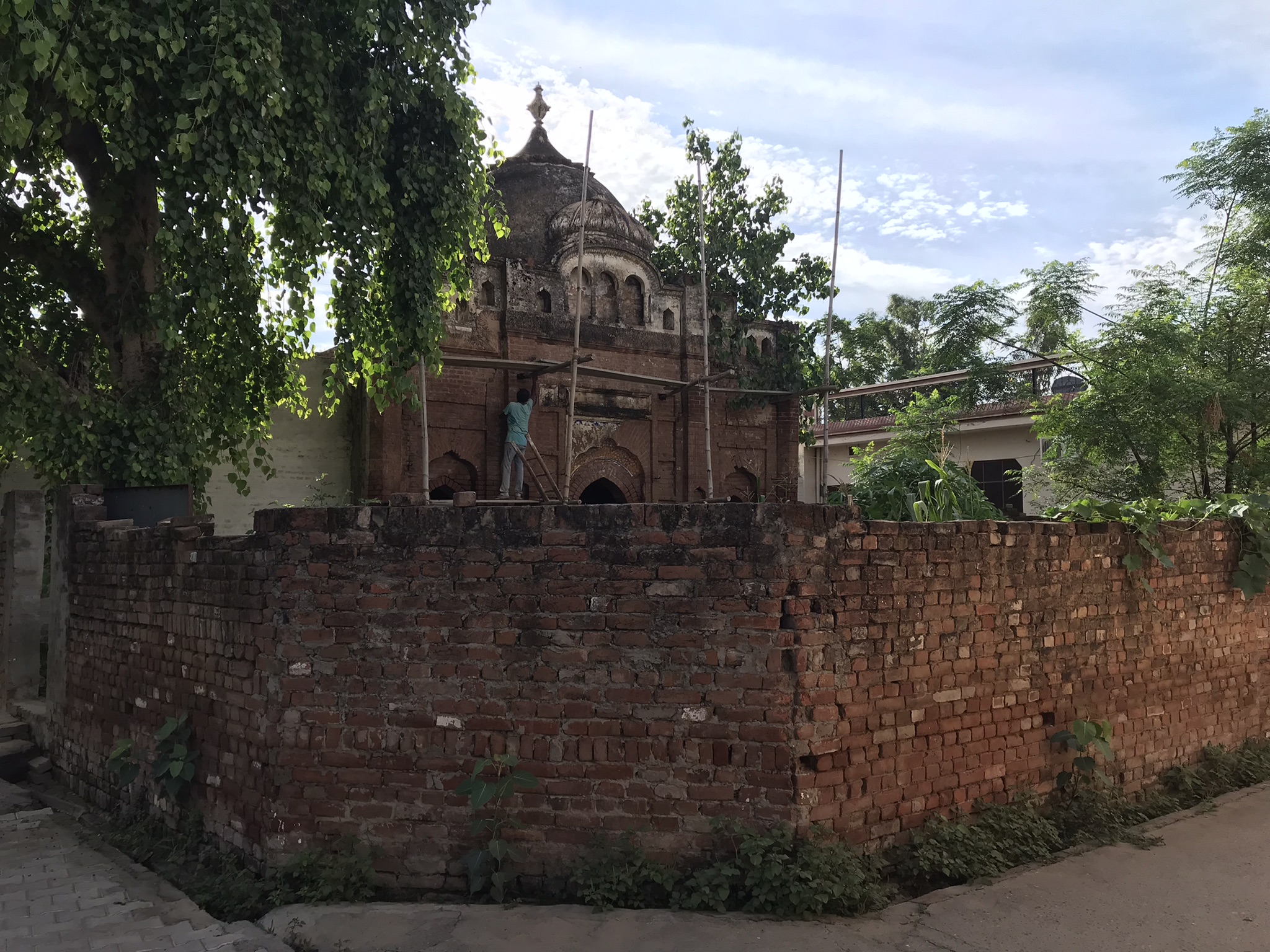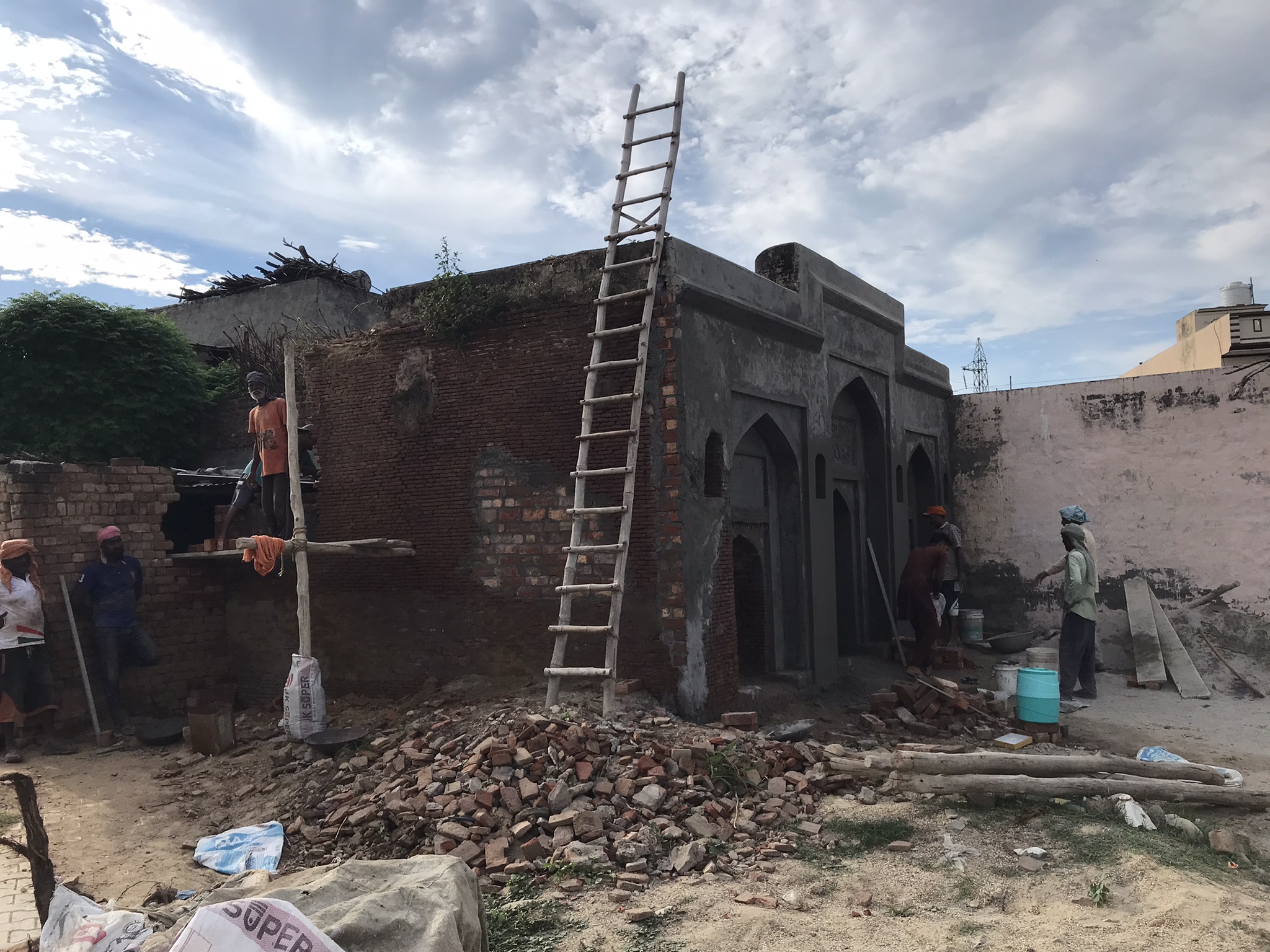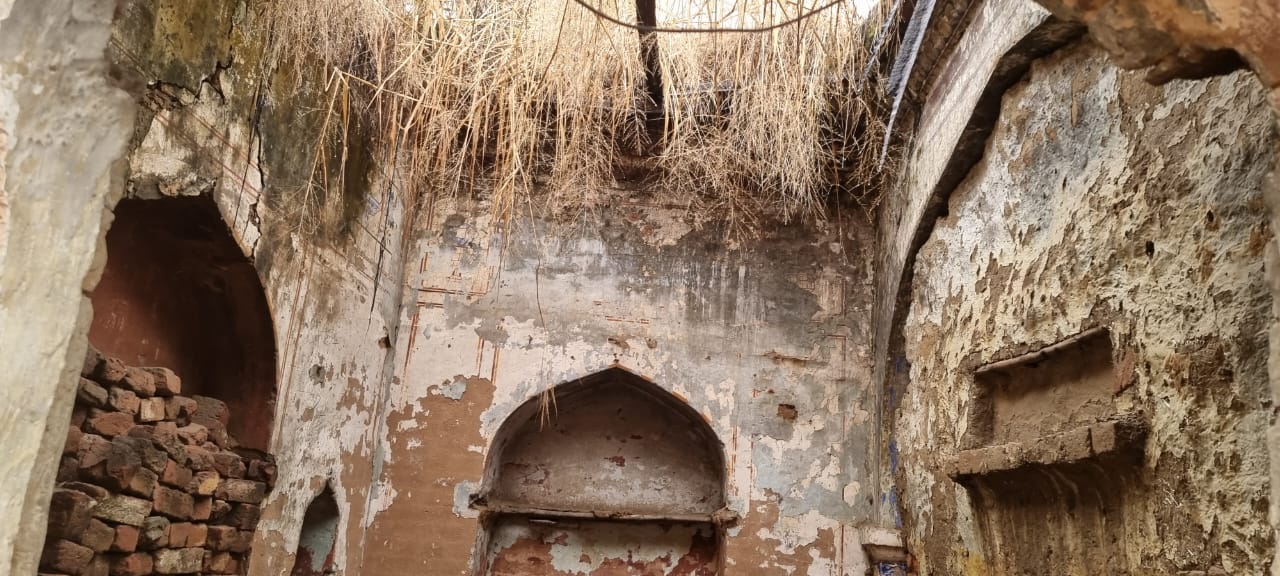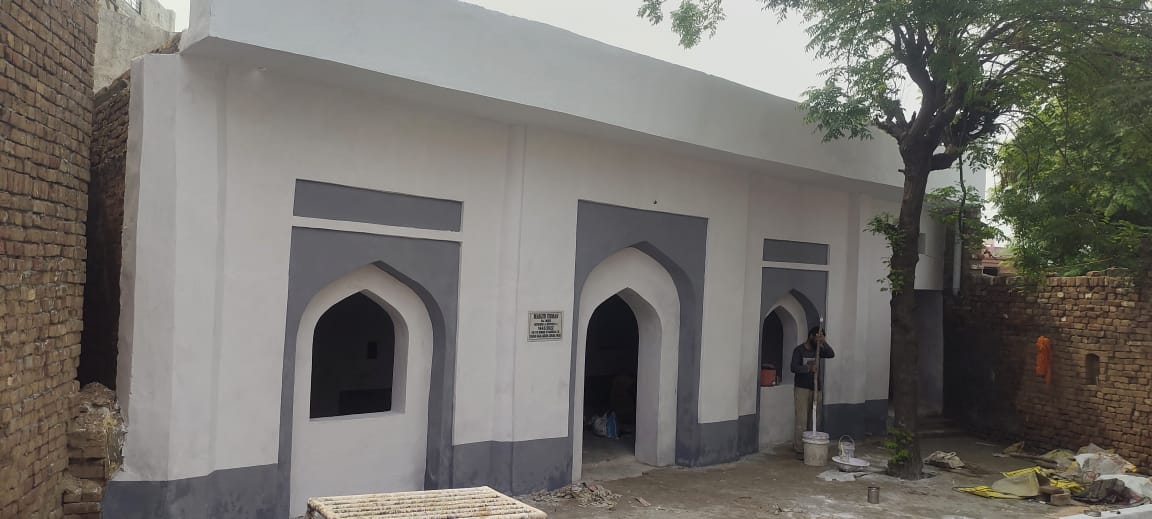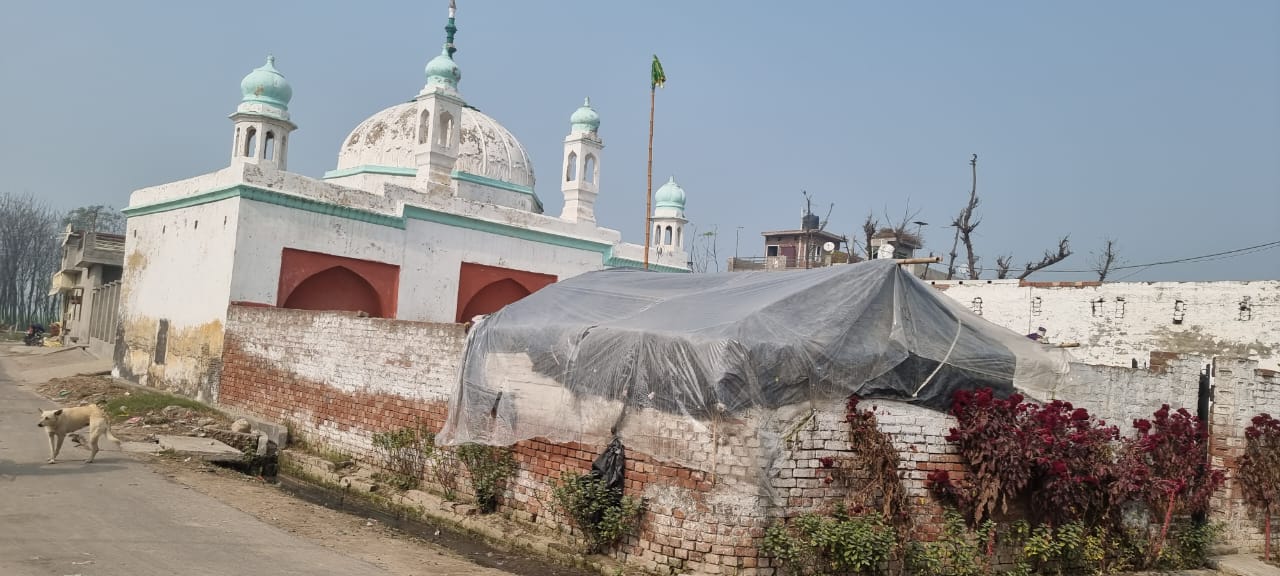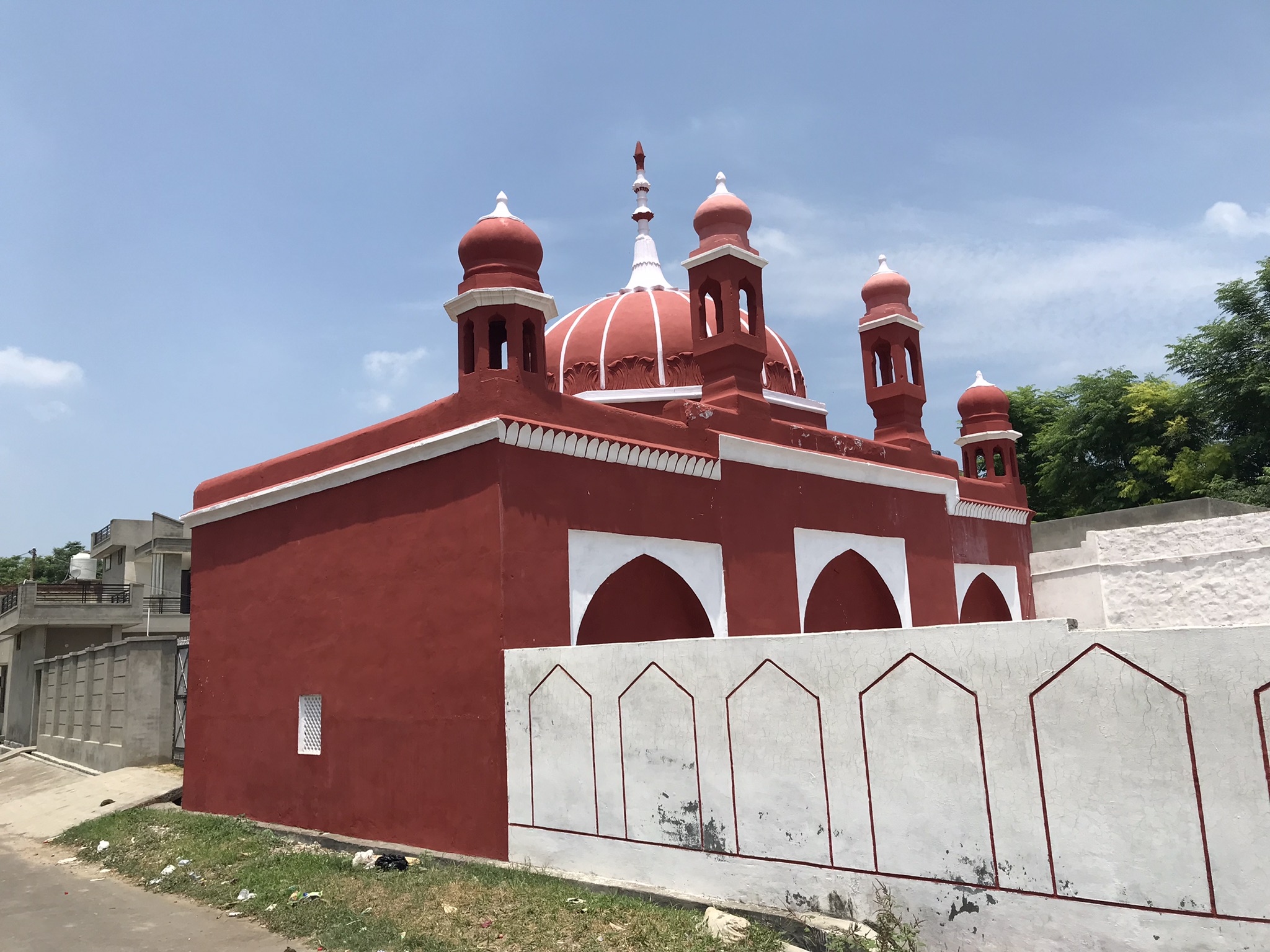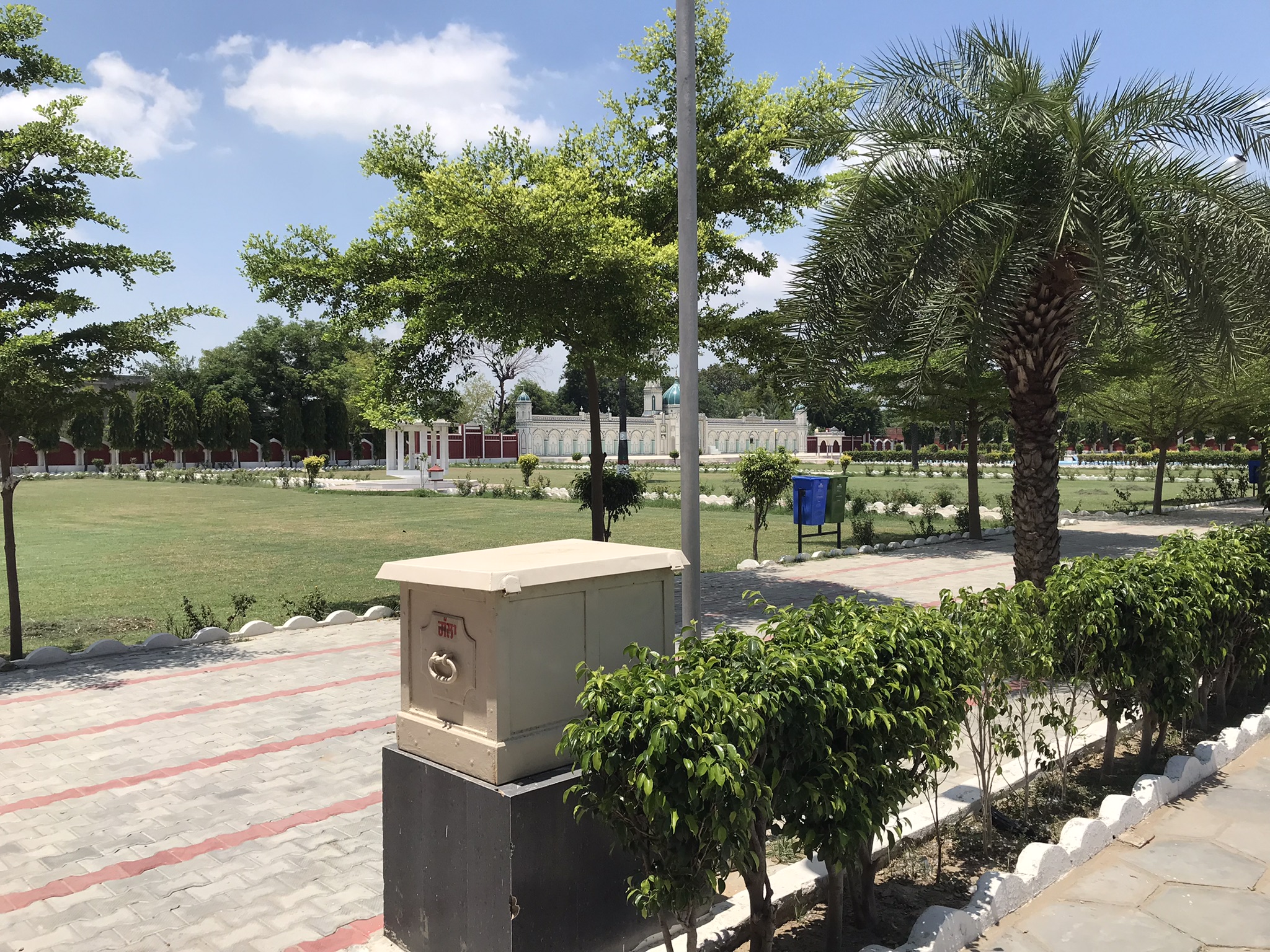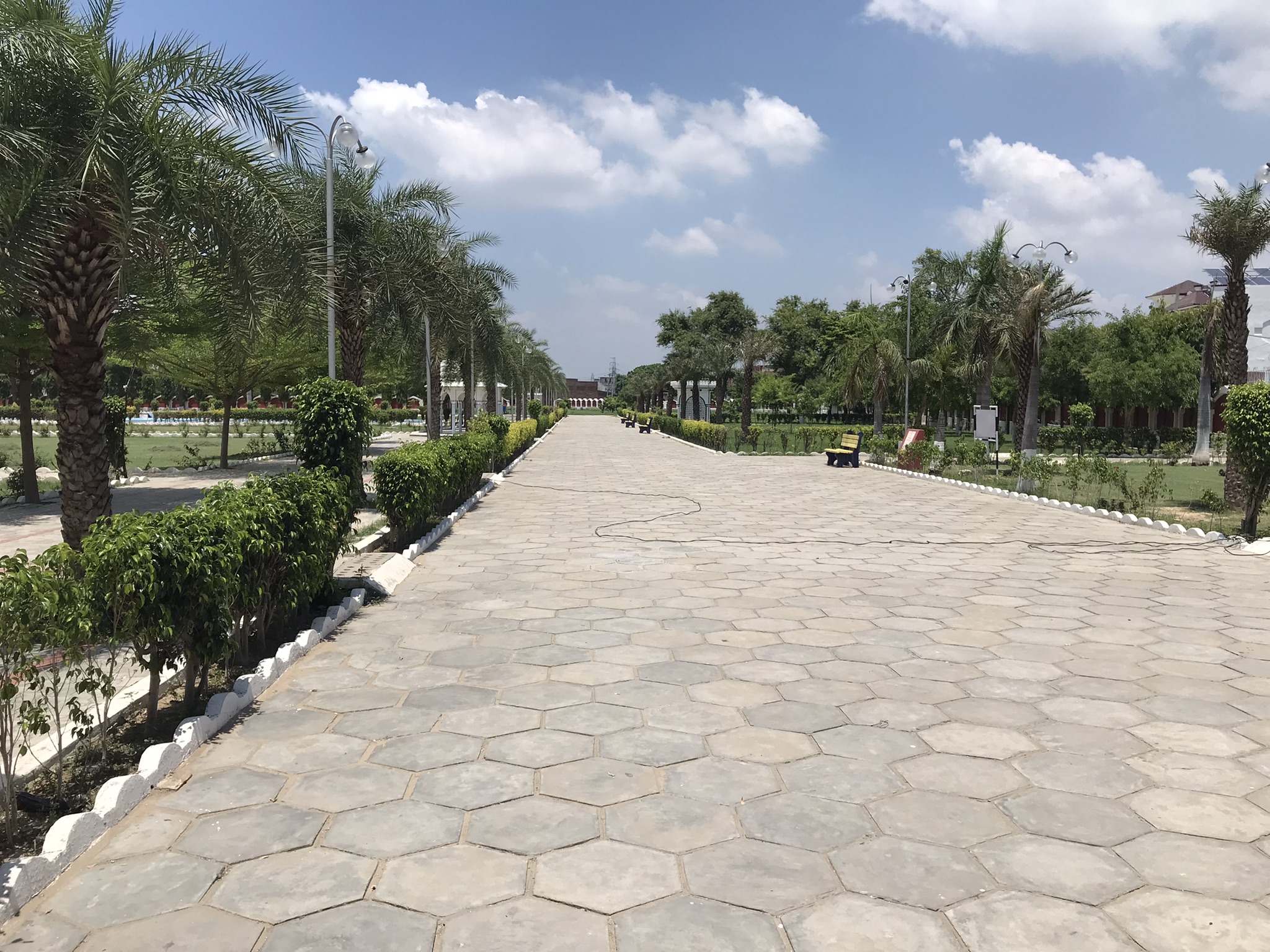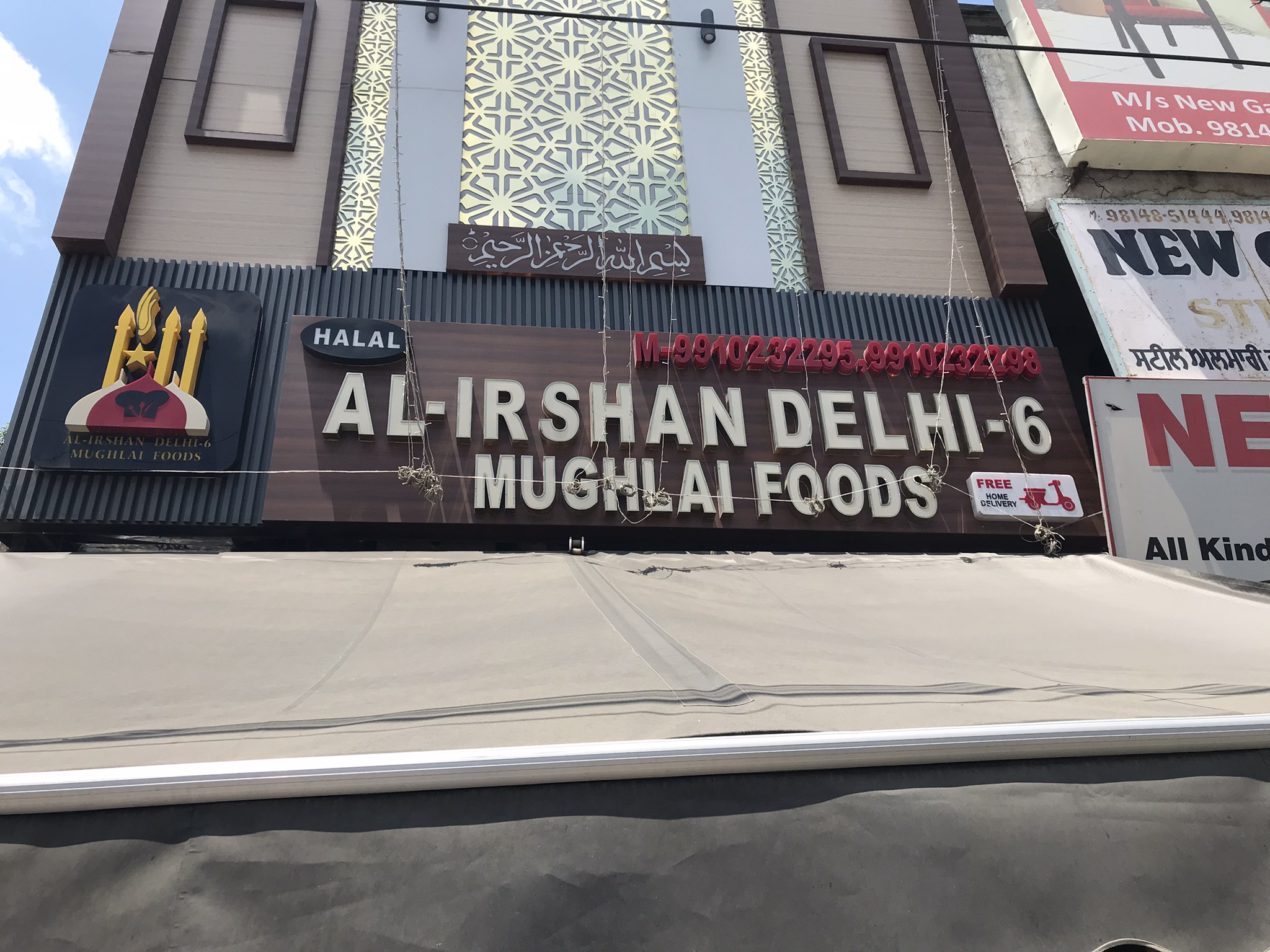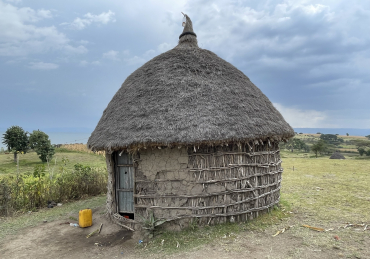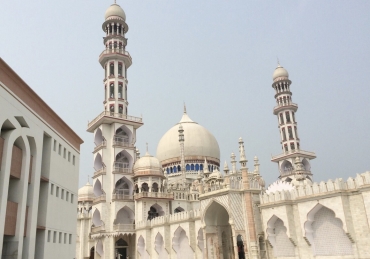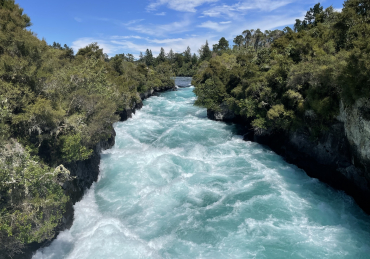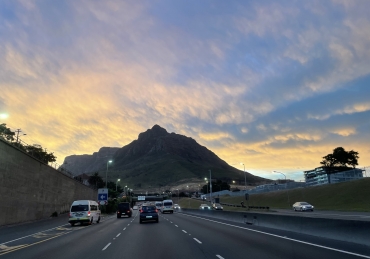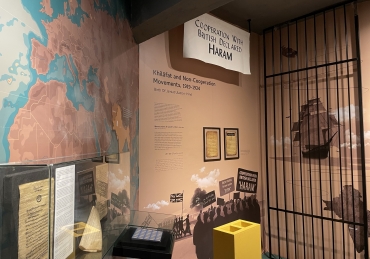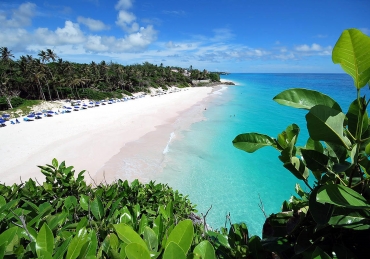Two-day tour of Punjab, India (July 2022)
In the Name of Allah, the Merciful, the Beneficent
Introduction
Allah Almighty blessed me with a trip to India in July 2022. During this journey, I visited various states including Gujarat, West Bengal, Assam and Punjab. In Gujarat, I met with our respected Mufti Ahmad Khanpuri (b. 1365/1946) who kindly invited me for lunch at his residence. Mufti Ṣāḥib’s health is stable, however he is weak and struggles to walk without support. Most of the places I visited in this trip are discussed in previous travelogues. However, I visited some new places in Punjab and thought it would be useful to pen a short travelogue. For details of my first and brief visit to Punjab in 2021, refer to the travelogue entitled: Visit to Pakistan, UAE and India (2021).
My primary purpose of travelling to Punjab was to visit some of the mosques that have been revived here by some friends. As detailed in the previous travelogue, some 20,000 Masjids were abandoned during partition and taken over by non-Muslims. Most Masjids remain occupied, many contain non-Islamic imagery and idols and most are in a very unsuitable and filthy condition. It only takes a few thousand pounds to release, repair and revive such Masjids.
Arrival into Amritsar
I board the 6.20pm Indigo flight from Kolkata on Thursday 14 July 2022 and arrive into Sri Guru Ram Dass Jee International Airport in Amritsar at 9.15pm. The following excerpt from the Encyclopaedia Britannica explains why the Airport is named after Guru Ram and the city is the centre of Sikhism:
“Amritsar was founded in 1577 by Ram Das, fourth Guru of the Sikhs, on a site granted by the Mughal emperor Akbar. Ram Das ordered the excavation of the sacred tank, or pool, called the Amrita Saras (“Pool of Nectar”), from which the city’s name is derived. A temple was erected on an island in the tank’s centre by Arjan, the fifth Guru of the Sikhs, which was then reached by a marble causeway. During the reign of Maharaja Ranjit Singh (1801–39), the upper part of the temple was decorated with a gold-foil-covered copper dome, and since then the building has been popularly known as the Golden Temple. Amritsar became the centre of the Sikh faith, and, as the focus of growing Sikh power, the city experienced a corresponding increase in trade. It was annexed to British India in 1849. Amritsar not only is home to hundreds of thousands of Sikhs but also is the chief pilgrimage destination for Sikhs living elsewhere in India and abroad.”
The city is about 15 miles from the border with Pakistan and is the second largest city of Punjab after Ludhiana. Its population exceeds 1 million people, and according to the 2011 census, 0.51% are Muslims.
My dear friend, Mawlānā Jawed Nadwi Ṣāḥib collects me and we head to Karim’s restaurant, which is a franchise of the Delhi branch and is Ḥalāl.
Following partition in 1947, the number of Muslims in the Indian side of Punjab reduced significantly. Thus, there are very few Ḥalāl restaurants here. Mawlānā explains that the Sikhs in Punjab enjoy a good relationship with Muslims as they are also a minority. There are many Sikhs in Punjab. Politically, the Aam Aadmi Party (AAP) is the ruling party in the state, as the people are fed up with the BJP and Congress. AAP is expanding its reach beyond Delhi.
We eat dinner and this is followed by fresh Chaunsa Mangoes, kindly purchased by Mawlānā Javed for me. I rest for the evening in Fairfield Marriot hotel which is a 3-4 star hotel of average quality.
Friday 15 July 2022
Amritsar to Ludhiana
Jama Masjid Khairuddin
In the morning, we begin touring Amritsar city. The centre of the city has many historic buildings although the city has many new modern areas with good infrastructure. Our first stop is the historic Jama Masjid, also known as the Khairuddin Masjid which was built by Muḥammad Khayruddīn in 1876 CE. The Masjid played an important role in India’s freedom struggle. It was here that the first ijlās (meeting) of Jamiat Ulema Hind took place in 1919 and it is from here that Mawlānā ʿAṭāullāh Shāh Bukhārī (d. 1381/1961) called upon the people to wage war against the British rulers. The mosque reflects traditional Islamic architecture with beautiful calligraphy adorning its walls. It is built of white marble and is decorated with miniature green paintings.
Accompanying us to this mosque is brother Muḥammad Dānish, a solicitor. His father Mawlānā Ḥāmid Ṣāḥib is the Imam here, who welcomes us. There is heavy rainfall this morning. We understand that the Punjab Waqf Board appoints the Imam of this mosque and also funds some of the running costs.
Interestingly, there is a Masjid nearby in Sadar Bazar which is known as Jama Masjid Jaan Mohammed, built and named after Muḥammad Khayruddīn’s brother. This is another historic mosque.
Most Muslims currently living in Amritsar and other large cities of Punjab are economic migrants from other Indian states such as Bihar. Most of the Punjabi Muslims migrated to Pakistan in 1947. The city was once upon a time home to many learned and famous scholars. One of the most famous scholars of the city was Mawlānā Thanāullāh Amritsarī (d. 1367/1948), a famous and learned Ahl Ḥadīth scholar who also studied in Mazahirul Uloom Saharanpur and Darul Uloom Deoband.
Golden Temple
Our next stop is the Golden Temple, which is the largest and most revered spiritual site for the Sikhs. The Temple is named after gold because the marble structure is enveloped with 500kg of pure 24 carat gold. The Temple is surrounded by a pond called the Amrit Sarovar, which is regarded sacred by the Sikhs and suggested to have medicinal properties. There are four entrances to the Temple. We visit the Temple from outside.
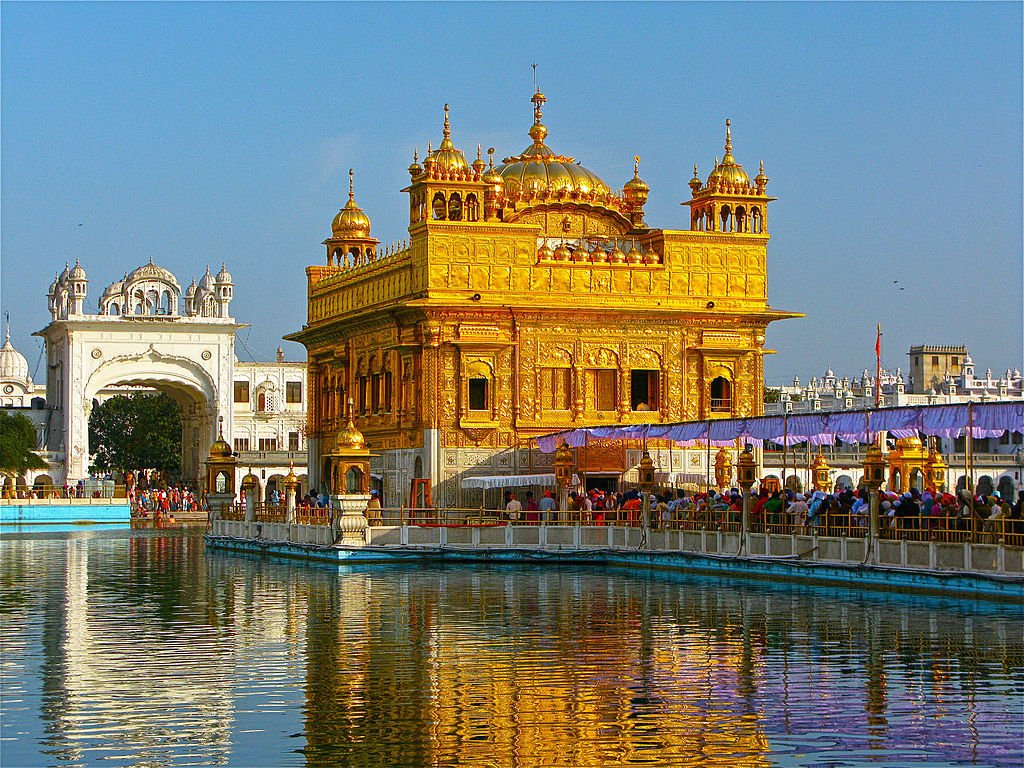
Jallianwala Bagh
We also pass the Jallianwala Bagh, a historic garden and memorial of national importance close to the Golden Temple. The garden serves the memory of those who were wounded and killed in the Jallianwala Bagh Massacre that occurred here on 13 April 1919. The massacre, also known as the Massacre of Amritsar, started with British troops firing on a large crowd of unarmed Indians, killing several hundred people and wounding hundreds more. The marks of some of the bullets remain to date. This Massacre marked a turning point in India’s modern history and left a permanent scar on Indo-British relations and was the prelude to Mahatma Gandhi’s full commitment to the cause of Indian nationalism and independence from Britain.
Masjid in Jethuwal
We arrive at midday in Jethuwal village, 15km from Amritsar city. Here, we visit the Jama Masjid (S001) which was recently released, revived and repaired by a friend.
We meet with the Imam Mawlānā Qārī Sharāfat and also Mawlānā Sakhāwat, who is an Imam at a Masjid 45km from here. Generally, Imams here receive a nominal salary. The monthly salary of one of the Mawlānās is 2500 INR (£25), and he receives 3000 INR (£30) from the Punjab Waqf Board.
Jalandhar
We leave Jethuwal and head east towards the historic city of Jalandhar, which was once a famous centre of learning and is the third most-populous city in Punjab. The city lies alongside the Grand Trunk (GT) Road and is a well-connected rail and road junction. The roads are generally good in Punjab. Jalandhar is 91 miles northwest of the state capital Chandigarh and 52 miles south-east of Amritsar. Many great scholars once lived here. They include Mawlānā ʿAṭāullāh Shāh Bukhārī (d. 1381/1961).
One of the famous attractions of the city is the Imam Nasir Mausoleum (Dargah). It is one of the oldest monuments and has been named after a pious saint, Imam Nāṣir al-Dīn al-Chishtī. According to archaeological surveys, the Mausoleum is supposedly an 800-year-old structure. I am not aware of this Imam and do not currently have access to books to identify him.
Kotli Sheikhan
We arrive at Kotli Sheikhan in Adampur district, which is 10 miles away from the city. Here, we visit Masjid Uthman (M003), a project which has been commissioned recently and where we monitor and observe the ongoing repair works.
Most of these abandoned Masjids are in a very bad state and some are also damaged structurally. In some villages, there are no Muslims, whilst in some, there are a few Muslims households. Sometimes they are economic migrants and sometimes they are Punjabi Muslims who remained behind in 1947. More often than not, more Muslims are identified once a Masjid is revived. Many, however, are distant from the basics of Islam due to lack of Islamic education. Every effort is made to appoint an Imam in these Masjids and also start a Maktab. This is not without its challenges.
Haveli Restaurant
We are now back on the Grand Truck (GT) Road heading towards Ludhiana. On the way, we stop at the Haveli restaurant and eat vegetarian lunch. As mentioned in the previous travelogue, Ḥalāl meat and chicken is not readily available everywhere. The food in the restaurant is good, although the waiter does not understand our instruction to avoid adding spices in our fruit juice.
A discussion follows with Mawlānā Jawed Ṣāḥib on the impact of partition on Masjids and Muslims of Punjab and whether the establishment of Pakistan was positive or negative. The issues can be looked at from both perspectives. When one visits Punjab, the position of Shaykh al-Islām Mawlānā Ḥusayn Aḥmad Madanī (d. 1377/1957) is appreciated. Mawlānā Jāwed mentions that Mawlānā ʿAṭāullāh Shāh Bukhārī and Raīs al-Aḥrār Mawlānā Ḥabīb al-Raḥmān Ludyānwī (d. 1376/1956) were not in favour of partition. Undoubtedly, it created widespread carnage and hundreds of thousands of people were killed. The sad reality is that scholars on both sides were deceived by the leaders at the time and both India and Pakistan did not become what the scholars were promised. Thus, both India and Pakistan need a fresh independence movement to truly liberate their nations.
We also discuss the various challenges facing Indian Muslims. The case of Mawlānā Kalīm Ṣaddīqī is also discussed, who is currently in prison. The deafening silence of scholars is quite worrying, as this is merely a test case.
Mallupota and Kariha
Our next stop at 4.45pm is Mallupota village, where we visit the Masjid Ali (M004) project.
This is followed by a visit to the Masjid Talhah (M005) project in Kariha.
Both villages are close to each other in the Nawanshahr district, 46km from Jalandhar and a similar distance from Ludhiana. Both these projects have been recently commissioned by a friend and were occupied by non-Muslims, similar to the previous Masjids. Both have been released and works are ongoing which are expected to finish in two to three months.
Goraya
We leave Nawanshahr district and head towards Goraya village, which is 25km north of Ludhiana city. Mawlānā ʿĀdil, the son-in-law of Mawlānā Arshad Madanī (b. 1360/1941) welcomes us here. He was sent here by Mawlānā Arshad Ṣāḥib to show us a site for a potential Masjid and Madrasah. The local community arrange tea and refreshments, which include some of the delicacies of Punjab.
Ludhiana
Our final stop for the day is the Madani Jama Masjid in Ludhiana, one of the many institutes run by Mawlānā Arshad Madanī Ṣāḥib.
Ludhiana is the most populous and the largest city in Punjab. It is a major agricultural market and industrial centre. Its largest industry is hosiery manufacturing, but the production of cotton textiles, steel, and machinery and the processing of agricultural products are also economically important. The city was founded in 1480 by members of Delhi’s ruling Lodi dynasty, from which its name is derived. It is on the Grand Trunk (GT) Road which runs between Delhi and Amritsar. Delhi is 300km from here and Amritsar is 140km.
The city’s population exceeds 1.6 million people. According to the 2011 census, 2.8% of the population is Muslim. Many of the Muslims here are economic migrants. Once upon a time, the city was home to great scholars. Many great scholars are attributed to Ludhiana. They include Raīs al-Aḥrār Mawlānā Ḥabīb al-Raḥmān Ludyānwī, the famous freedom fighter, and Mufti Rashīd Aḥmad Ludyānwī (d. 1422/2002), the prolific jurist and author of the ten volume Aḥsan al-Fatāwā in Urdu.
We arrive at the Madani Jama Masjid on Rahon Road, Mehraban Chungi, Ludhiana after 8pm. There is heavy traffic on the way and it takes us 90 minutes to arrive. We perform Magrib Ṣalāh and eat some refreshments. The Masjid is also home to a Madrasah. It is holiday season, so we are unable to meet the students.
Saturday 16 July 2022
Malerkotla: A unique place
Talwandi Kalan
We depart in the morning at 10.30am and head west towards Talwandi Kalan village. Here, we visit Masjid Usman (M002) a completed project. We perform Taḥiyyat al-Masjid here and meet with some of the local residents.
Aandlu
At midday, we arrive at Aandlu where we visit the Masjid Abu Bakr (S002), also known as the Lāl (Red) Masjid. This Masjid was under the control of a Sikh person. The Masjid renovation is complete and Ṣalāh has begun.
We meet with the Imam who confirms that in Eid al-Aḍḥā, there were fifty participants. These Masjid revival projects also include a room for the Imam, where he can reside if he is not from the local area.
Malerkotla
At 1pm, we arrive at Malerkotla and are surprised to see many Masjids domes and tall minarets. Mawlānā Jawed explains the reason and history behind this. He states,
“In 1947, some 600,000 people were killed across Punjab. This area of Malerkotla was spared and this was the only area where there was no bloodshed. The Muslims remained here and did not migrate. There are hundreds of Masjids in the area. There was no rioting here in 1947. This is a Muslim majority area and provides a glimpse of how other areas of Punjab were before 1947. The Adhān can be heard on the loudspeaker. There is a historical reason behind this dating back to 1705. Zorawar Singh and Fateh Singh, 9 and 7 year old sons of the tenth Sikh Guru, Guru Gobind Singh, were ordered to be bricked alive by the governor of Sirhind, Wazir Khan. However, his close relative, Sher Mohammed Khan, Nawab of Malerkotla, who was present in the court, lodged a vehement protest against this and said it was against Islamic teachings. Wazir Khan nevertheless had the boys bricked into a section of wall whilst still alive. The Nawab of Malerkotla walked out of the court in protest. The Sikhs never forgot this gesture and therefore provided protection to this area during partition.”
It is a remarkable story which provides a glimmer of hope.
Eidgah
Our first stop in Malerkotla is the grand Eidgah, which sprawls over 10 acres and features canals, fountains, pavilions and glades, all criss-crossed by clean and neat pathways. The Eidgah can accommodate several hundred thousand people. The Chief Minister of Punjab attends annually during Eid and also donates 1-1.5 million rupees. This is among the largest Eidgahs in Asia.
As we come out, we perform Ẓuhr Ṣalāh in a nearby Masjid. I start to wonder that we are only reviving Masjids at the moment in other parts of Punjab. However, once upon a time, there would have been an environment all over Punjab similar to that of Malerkotla with centres for Islamic learning and spirituality in full action. Today, with the exception of this area, it is difficult to locate Muslims in Punjab let alone find such centres.
Mawlānā Jawed mentions another interesting fact about Malerkotla. This is the only place in India where the ‘Mufti ʿAẓam’ (Grand-Mufti) role exists officially at Governmental level; the pre-partition tradition has continued. The current Mufti is Mufti Irtiqāul Ḥasan of Kandhla, UP, who is given a house and remunerated by the Government. The position holds weight including in courts and legal matters.
We eat lunch at Al-Irshan Delhi-6 Mughlai Foods and depart from Malerkotla, the highlight of our journey.
Haryaoo, Patiala
As 3pm, we arrive at Haryaoo, a village I visited in November 2021. At the time, the Masjid Hadrat Umar (M001) renovation had just begun.
Al-Ḥamdulillāh, today the renovation is complete and an official opening ceremony is taking place with some of the local Sikh leaders also present.
May Allah accept the efforts of all those who have contributed towards this cause and make the Masjid a beacon of guidance and aspiration.
Fresh Fruit Juice
We depart from Haryaoo and head to Ambala. On the way, I suggest to Mawlānā Jawed that we should purchase some fresh fruit juice. He stops at a shop and what a coincidence that it is the same shop we stopped at in my previous journey. The shop has some standard fresh fruit juices. However, we choose grapes, pineapples, apples, oranges and fresh juice is made from these fruits.
Jamia Darus Salam, Ambala
We arrive at Jamia Darus Salam at 6pm and distribute some money here to some destitute families and elderly people who have been selected in advance. Jamia Darus Salam was founded by Mawlānā Jawed, as outlined in the previous travelogue.
Prophet’s grave in Baras, Sirhind
Mawlānā Jāwed mentions that there is a grave in Baras, Sirhind which is attributed to a Prophet. Time does not allow us to visit it as I have an early morning flight from Chandigarh to Guwahati, Assam. It cannot be said with certainty that the grave is of a prophet. Such things should not be affirmed or negated. Shaykh al-Islam Ibn Taymiyyah (d. 728/1329), Ḥāfiẓ Ibn Kathīr (d. 774/1373) and other scholars have written that the graves of all the prophets are unknown, with the exception of our beloved Prophet ﷺ, and Prophet Ibrāhīm (peace be upon him) in Masjid al-Khalīl in Palestine.
Chandigarh
We arrive into Chandigarh, eat dinner at Karim’s restaurant, and rest at Wyndham Hotel. The hotel is good. However, loud music continued throughout the night from a neighbouring club, causing a lot of noise and disturbance.
In the morning, I board the 6.45am flight from Chandigarh and arrive into Guwahati at 10.45pm with a short stop in Lucknow.
Concluding thoughts
The greatest challenge in Punjab is to revive Islam and ensure that the economic migrants and in particular the Muslims that remained behind in 1947 remain attached to Islam. This requires grassroots effort. Reviving Masjids is an important part of this aim but more work is required in establishing Makātib and appointing Imams who can visit villages, identify Muslim households and encourage them to send their children to Islamic education classes. This is the need of Punjab, to work at grassroots level. Rather than establishing additional seminaries and directing resources there, Imams and scholars need to be deployed to local communities in the rural areas and supported financially and otherwise. May Allah preserve our Īmān and the Īmān of our progenies.
Dr Yusuf Shabbir
11 Ṣafar 1444 / 8 September 2022

